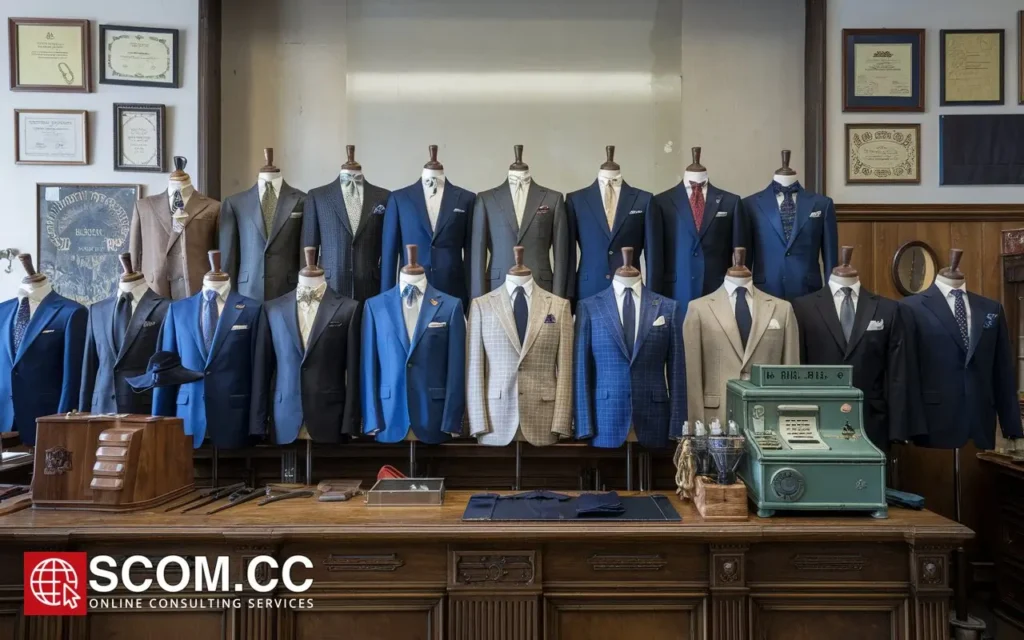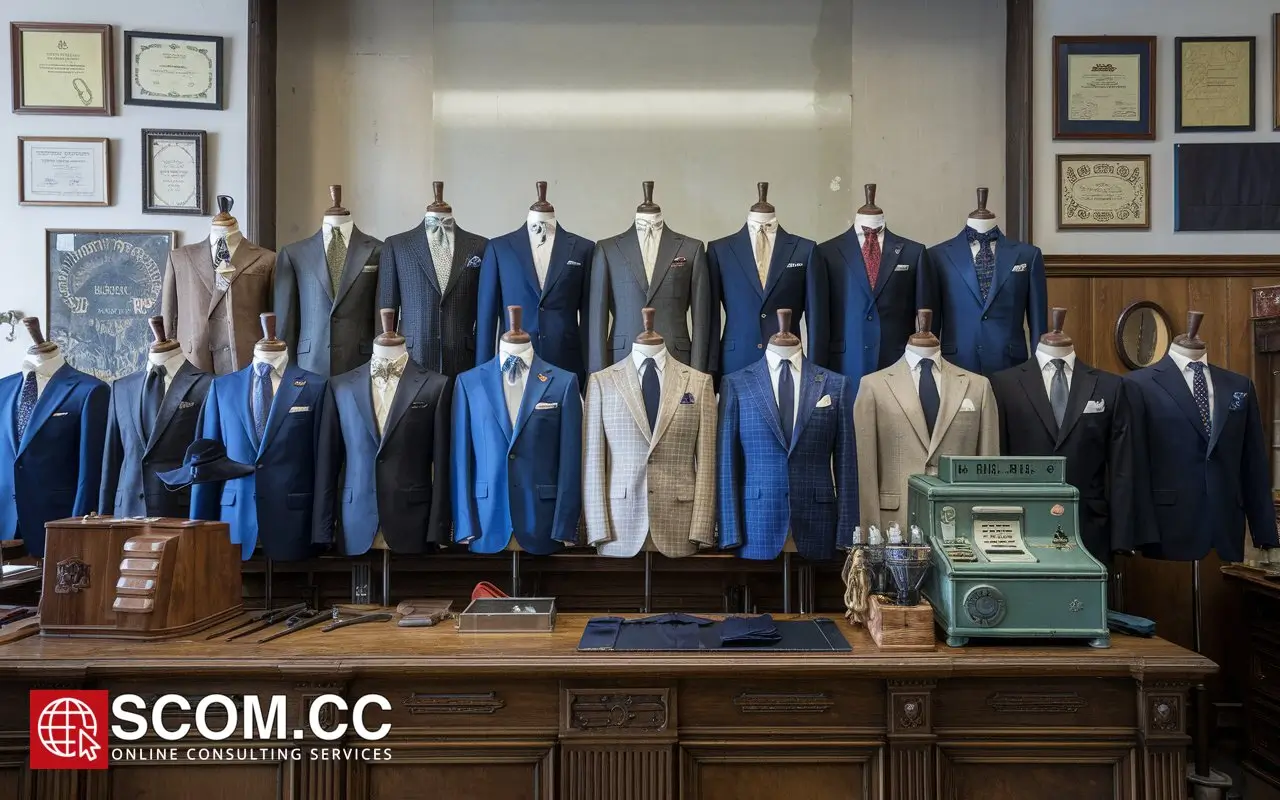How Did Tailoring Practices Vary Across Different Cultures and Regions?

- How Did Tailoring Practices Vary Across Different Cultures and Regions?
- European Tailoring Traditions
- Asian Tailoring Practices
- Middle Eastern Tailoring Traditions
- African Tailoring Practices
- Latin American Tailoring Practices
- Conclusion: A Global Tapestry of Tailoring Practices
-
FAQ
- 1. What are the distinctive features of British tailoring?
- 2. How does French tailoring differ from British tailoring?
- 3. What is unique about Japanese tailoring?
- 4. How has Chinese tailoring evolved over time?
- 5. What are the traditional tailoring practices in the Middle East?
- 6. How does West African tailoring reflect cultural identity?
- 7. What are some modern influences on South American and Brazilian tailoring?
How Did Tailoring Practices Vary Across Different Cultures and Regions?
Introduction: The Global Landscape of Tailoring
Tailoring is a craft deeply rooted in cultural and regional traditions. Across the globe, tailoring practices have evolved to reflect local customs, resources, and societal norms. This article explores the diverse tailoring practices across different cultures and regions, highlighting how historical, economic, and social factors have shaped these traditions.
European Tailoring Traditions
British Tailoring: Precision and Elegance
British tailoring is renowned for its precision and elegance. The classic Savile Row style, originating in London, epitomizes high-quality craftsmanship with its distinctive features, including structured shoulders, a narrow waist, and full-length trousers. The use of fine wool fabrics and meticulous hand-stitching techniques has cemented British tailoring as a symbol of sophistication and class.
Key Innovations: The British introduced the concept of bespoke tailoring, where garments are made to individual specifications, ensuring a perfect fit. The three-piece suit, comprising trousers, a jacket, and a waistcoat, became a hallmark of British fashion.
French Tailoring: Haute Couture and Innovation
French tailoring, particularly from Paris, is synonymous with haute couture and fashion-forward designs. French tailors and designers, such as Coco Chanel and Christian Dior, revolutionized tailoring with their emphasis on luxury fabrics and innovative cuts. The French approach often incorporates elegant drapery, intricate detailing, and feminine silhouettes.
Key Innovations: The French popularized the use of soft, flowing fabrics and introduced the concept of couture fittings, where garments are meticulously crafted to enhance the wearer's body shape.
Asian Tailoring Practices
Japanese Tailoring: Minimalism and Craftsmanship
Japanese tailoring is celebrated for its minimalist aesthetic and high level of craftsmanship. The traditional kimono, a significant part of Japanese culture, showcases intricate tailoring techniques with its fluid lines and asymmetrical designs. Modern Japanese tailoring, influenced by designers like Issey Miyake and Yohji Yamamoto, combines traditional elements with contemporary fashion-forward designs.
Key Innovations: Japanese tailors emphasize the use of natural fabrics such as cotton and silk, and techniques like sashiko (a form of decorative reinforcement stitching) that add both functionality and aesthetic value to garments.
Chinese Tailoring: Cultural Symbolism and Tradition
In China, tailoring has long been associated with the qipao (or cheongsam), a traditional garment known for its elegant lines and high collars. The qipao's tailoring involves intricate embroidery and fine silk fabrics, reflecting the wearer’s status and cultural heritage.
Key Innovations: The qipao's design has evolved to incorporate modern fits while retaining traditional cultural elements. Contemporary Chinese tailoring often blends these elements with Western influences.
Middle Eastern Tailoring Traditions
Traditional Middle Eastern Garments
Middle Eastern tailoring is characterized by garments such as the thobe (or dishdasha) and abaya, which reflect cultural and religious values. These garments are typically made from lightweight, breathable fabrics to suit the region's climate. Tailoring focuses on modesty and comfort, with designs that allow for ease of movement and functional wear.
Key Innovations: Traditional garments often feature intricate embroidery and decorative patterns, particularly in ceremonial and formal attire.
Modern Influences
In recent years, Middle Eastern tailoring has integrated global fashion trends while maintaining traditional styles. The blending of traditional and modern elements has led to a unique fashion fusion, where luxurious fabrics and contemporary cuts coexist with traditional designs.
African Tailoring Practices
West African Tailoring: Vibrant and Expressive
West African tailoring is known for its vibrant colors and bold patterns, often incorporating traditional fabrics such as ankara and kente cloth. Tailors in this region focus on expressive designs that reflect cultural identity and status. The boubou, a wide-sleeved robe, is a notable example of West African tailoring.
Key Innovations: The use of bright prints and handcrafted embellishments is a hallmark of West African fashion, blending tradition with individual expression.
East African Tailoring: Fusion of Tradition and Modernity
East African tailoring often combines traditional garments like the kitenge (a colorful fabric) with modern styles. The tailoring of garments such as safari suits and modernized traditional attire demonstrates a blend of cultural heritage and contemporary fashion.
Key Innovations: East African tailors are known for their innovative use of local fabrics and incorporation of global fashion trends into traditional clothing.
Latin American Tailoring Practices
South American Tailoring: Indigenous and Contemporary Designs
South American tailoring often reflects the rich cultural heritage of the region, blending indigenous textiles with modern fashion. The use of handwoven fabrics and intricate patterns from Peruvian and Bolivian cultures is common in traditional garments.
Key Innovations: Modern South American tailoring incorporates traditional designs with contemporary cuts, creating a fusion that celebrates both heritage and modernity.
Brazilian Tailoring: Casual and Vibrant
Brazilian tailoring is known for its casual and vibrant style, influenced by the country's tropical climate. Suits and dresses often feature bright colors and lightweight fabrics, reflecting the relaxed and lively Brazilian lifestyle.
Key Innovations: Brazilian tailors emphasize comfortable cuts and festive patterns, merging traditional styles with modern fashion influences.
Conclusion: A Global Tapestry of Tailoring Practices
Tailoring practices around the world exhibit a fascinating array of styles, techniques, and cultural influences. From the elegant craftsmanship of British tailoring to the vibrant fabrics of West African attire, each region brings its unique heritage and creativity to the art of tailoring. Understanding these diverse practices offers valuable insights into how tailoring reflects and adapts to cultural and regional identities.
Summary Table of Tailoring Practices Across Cultures and Regions
| Region/Culture | Traditional Garments | Key Features | Modern Influences |
|---|---|---|---|
| British | Savile Row Suit | Structured shoulders, narrow waist, full-length trousers | Bespoke tailoring, three-piece suit |
| French | Haute Couture | Luxury fabrics, elegant drapery, innovative cuts | Couture fittings, soft flowing fabrics |
| Japanese | Kimono | Fluid lines, asymmetrical designs | Minimalist aesthetic, natural fabrics, sashiko stitching |
| Chinese | Qipao (Cheongsam) | High collar, intricate embroidery | Modern fits, blend of traditional and Western influences |
| Middle Eastern | Thobe (Dishdasha), Abaya | Modesty, breathable fabrics | Fusion of traditional and modern styles |
| West African | Boubou | Vibrant colors, bold patterns | Handcrafted embellishments, traditional prints |
| East African | Kitenge, Safari Suits | Cultural heritage blends, contemporary fashion | Fusion of local fabrics with global trends |
| South American | Handwoven fabrics, Traditional attire | Rich cultural heritage, intricate patterns | Modern cuts combined with traditional designs |
| Brazilian | Suits, Dresses | Bright colors, lightweight fabrics | Comfortable cuts, festive patterns |
FAQ
1. What are the distinctive features of British tailoring?
British tailoring is known for its structured shoulders, narrow waist, and full-length trousers. The Savile Row style is especially recognized for its precision, elegant craftsmanship, and the use of fine wool fabrics. Bespoke tailoring, which offers a perfect fit through personalized measurements, is a hallmark of British tailoring.
2. How does French tailoring differ from British tailoring?
French tailoring emphasizes luxury and innovation with a focus on haute couture. It often features elegant drapery and soft, flowing fabrics. Unlike British tailoring, which is characterized by its structured and formal look, French tailoring incorporates more fluid and feminine silhouettes. Couture fittings are also a distinctive aspect of French tailoring.
3. What is unique about Japanese tailoring?
Japanese tailoring is celebrated for its minimalist aesthetic and high level of craftsmanship. Traditional garments like the kimono showcase fluid lines and asymmetrical designs. Modern Japanese tailoring blends traditional elements with contemporary fashion, often using natural fabrics and techniques such as sashiko stitching.
4. How has Chinese tailoring evolved over time?
Chinese tailoring historically features garments like the qipao (cheongsam), known for its high collar and intricate embroidery. Over time, Chinese tailoring has evolved to incorporate modern fits while maintaining traditional cultural elements. This evolution reflects a blend of historical styles with Western fashion influences.
5. What are the traditional tailoring practices in the Middle East?
Traditional Middle Eastern tailoring includes garments like the thobe (dishdasha) and abaya, which focus on modesty and comfort. These garments are typically made from breathable fabrics and feature simple, functional designs. Modern influences have introduced a mix of traditional styles with contemporary fashion trends.
6. How does West African tailoring reflect cultural identity?
West African tailoring is known for its vibrant colors and bold patterns, often using traditional fabrics such as ankara and kente cloth. The boubou is a prominent example, reflecting cultural identity and status through expressive designs and handcrafted embellishments.
7. What are some modern influences on South American and Brazilian tailoring?
South American tailoring incorporates indigenous textiles with modern fashion, blending traditional designs with contemporary cuts. Brazilian tailoring, influenced by the country’s tropical climate, features casual, vibrant styles with bright colors and lightweight fabrics. Modern influences include the integration of global fashion trends with traditional styles.

To explore more about tailoring, visit our Blog of Tailoring. If you have any questions or need assistance, go to our contact page. Additionally, you can find more information about tailoring and consulting at this tailoring and consulting portal.

Leave a Reply